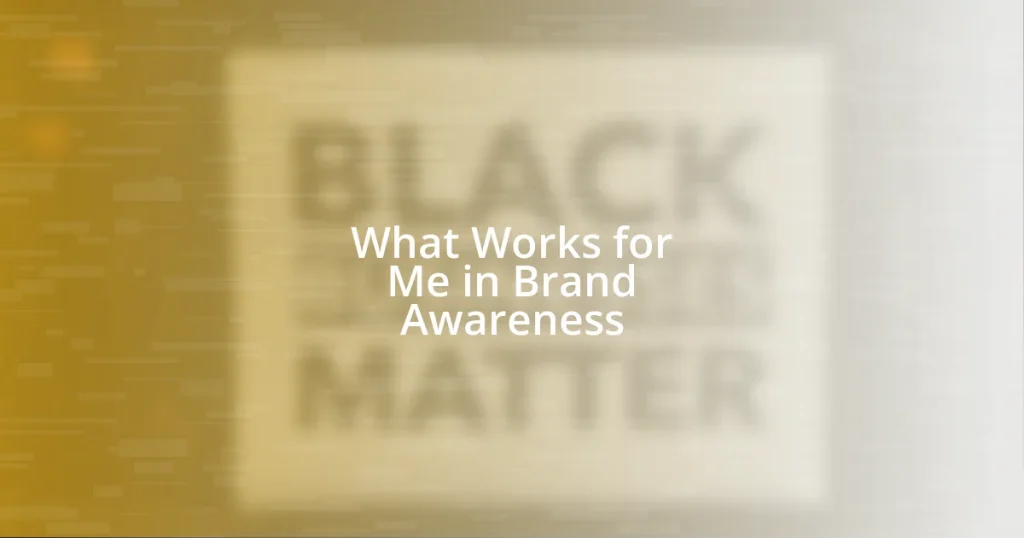Key takeaways:
- Storytelling fosters deeper connections and emotional engagement, turning complex ideas into relatable narratives that resonate with audiences.
- Key elements of effective storytelling include strong characters, conflict resolution, emotional resonance, structured delivery, and vivid imagery.
- Measuring storytelling impact can be achieved through audience engagement, behavioral responses, and data analytics, demonstrating its tangible influence on brands and causes.
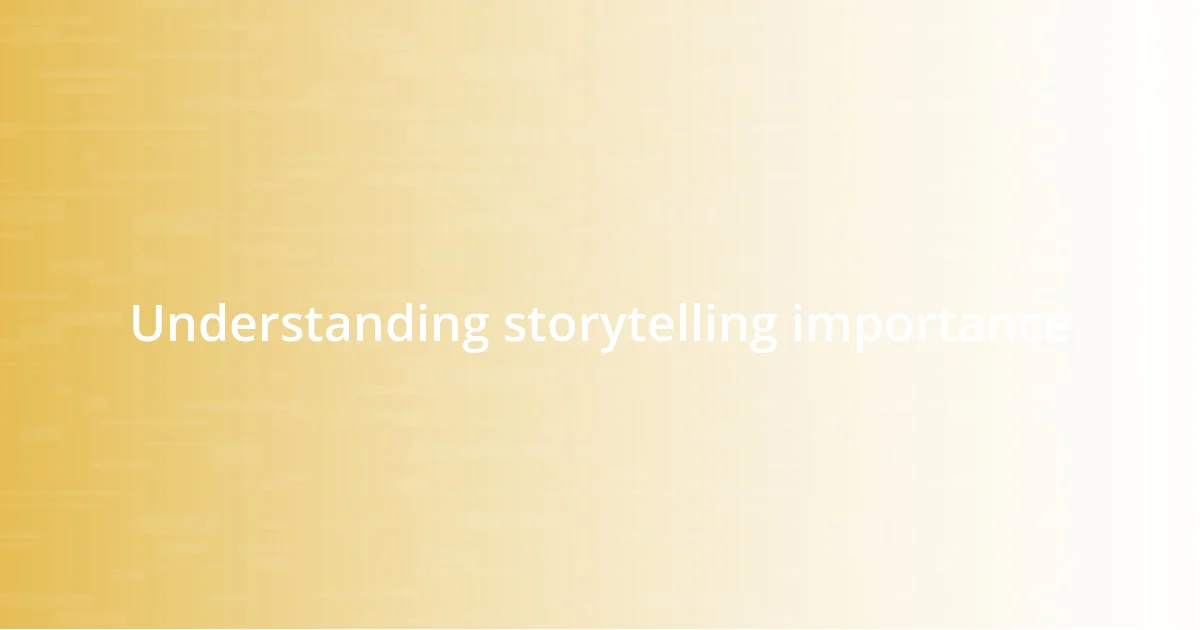
Understanding storytelling importance
When I think about the power of storytelling, I can’t help but recall a summer evening spent around a campfire, surrounded by friends. Each tale shared that night seemed to weave an invisible thread connecting us, stirring emotions ranging from laughter to nostalgia. Isn’t it fascinating how a simple story can bridge gaps and foster deeper connections between people?
The importance of storytelling lies in its ability to convey complex ideas and emotions in a relatable manner. I remember attending a presentation once where the speaker shared a personal story that resonated with my own experiences. It struck me then how narratives could make even the driest subjects come alive, turning facts into a vivid tapestry of human experience. How often have you left a talk feeling touched or inspired simply because of a storyteller’s approach?
Furthermore, storytelling can empower individuals and communities by advocating for change. I’ve seen firsthand how a compelling narrative can rally people around a common cause. Isn’t it incredible how sharing our stories can illuminate issues that might otherwise remain in the shadows? It invites listeners not just to hear, but to feel, reflect, and often act.

Key elements of effective storytelling
Effective storytelling hinges on several key elements that amplify its impact. One essential aspect is the connection to the audience. I vividly remember a time when I shared a story about my first job interview. The nervousness I felt resonated with many of my friends, sparking relatable conversations about their own experiences. This connection transforms a simple narrative into a shared journey, allowing listeners to invest emotionally in the tale being told.
Another crucial element is character development. Characters breathe life into a story; they invite empathy and relatability. A tale I heard about a young girl overcoming her fear of public speaking showcased her vulnerabilities and triumphs in such vivid detail that I felt as if I were cheering her on in that moment. Here are key elements that build effective storytelling:
- Strong Characters: Create relatable characters that your audience can connect with.
- Conflict and Resolution: Engage listeners with challenges that the characters face and how they overcome them.
- Emotion: Evoke feelings that resonate deeply by sharing authentic experiences.
- Structure: Use a clear beginning, middle, and end to guide your audience through the narrative seamlessly.
- Imagery and Details: Paint vivid pictures with words, helping your audience visualize each scene and experience.

Techniques for engaging your audience
One effective technique for engaging your audience is the use of vivid imagery. I recall a workshop I attended where the facilitator described a bustling market scene in such rich detail that I could almost smell the spices and hear the lively chatter. This level of visualization pulls the audience into the story, creating an immersive experience that keeps them captivated.
Another powerful approach is incorporating interactive elements into your storytelling. I once led a session where I invited the audience to share their thoughts at certain moments in the narrative. This not only made them feel involved but also enriched the story as they contributed their own insights. Engaging your audience in this way fosters a sense of ownership and connection with the material being presented.
Lastly, compelling pacing in your storytelling can significantly enhance audience engagement. I’ve found that strategically varying the tempo of my delivery—speeding up during moments of excitement and slowing down for reflection—creates a dynamic rhythm. It’s incredible how this technique keeps listeners on their toes, eager to see what happens next while feeling the weight of impactful moments.
| Technique | Description |
|---|---|
| Vivid Imagery | Use descriptive language that paints a picture and immerses the audience in the scene. |
| Interactive Elements | Encourage audience participation through sharing their thoughts or responding to questions. |
| Compelling Pacing | Vary the speed and rhythm of your delivery to maintain interest and emphasize key moments. |
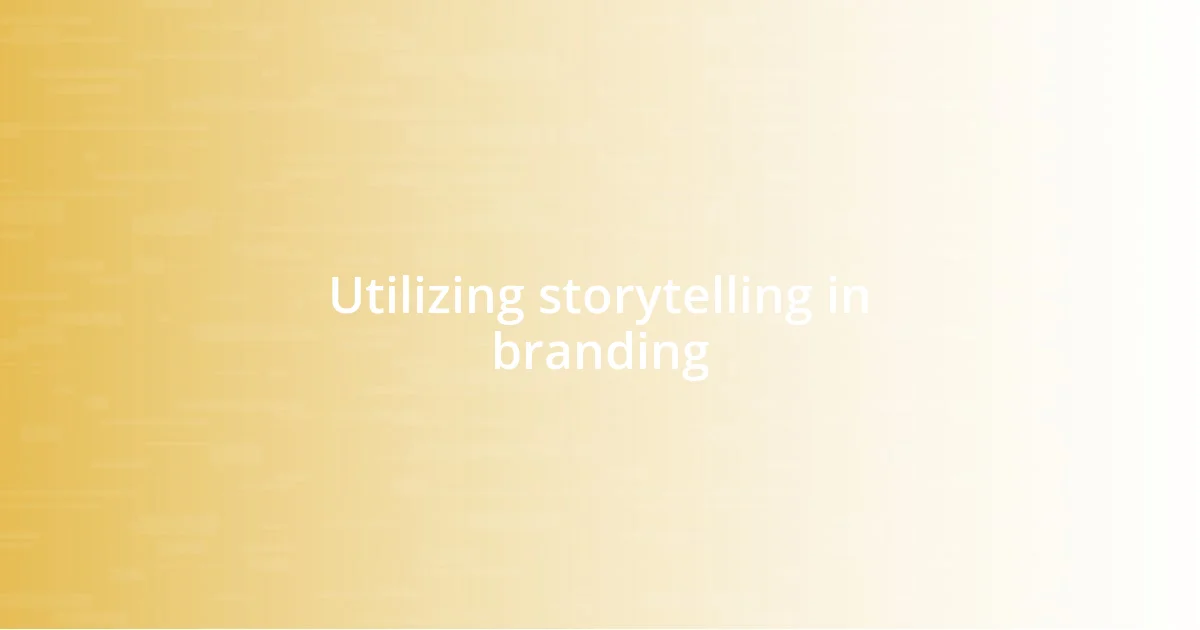
Utilizing storytelling in branding
When it comes to branding, storytelling allows companies to forge deeper connections with their audience. I remember a campaign from a local coffee shop that centered around a barista sharing her grandmother’s recipe for their signature drink. The story not only highlighted the drink’s uniqueness but also made customers feel as though they were part of a larger family tradition, creating loyalty beyond just the product.
Another aspect I’ve seen is how brands can humanize their image through storytelling. For instance, when a popular athletic brand showcased real-life athletes overcoming struggles, I was inspired by the authenticity in their stories. It wasn’t just about selling shoes; it was about embodying resilience and determination, which resonated with many of us chasing our own dreams.
Additionally, the emotional pull of a good story can bolster brand identity. I once encountered a skincare brand that shared testimonials of customers overcoming skin challenges. Hearing their journeys made me trust the brand immensely, as if I were connecting with friends who shared similar vulnerabilities. Isn’t it fascinating how stories can turn casual consumers into loyal advocates simply by highlighting shared experiences?
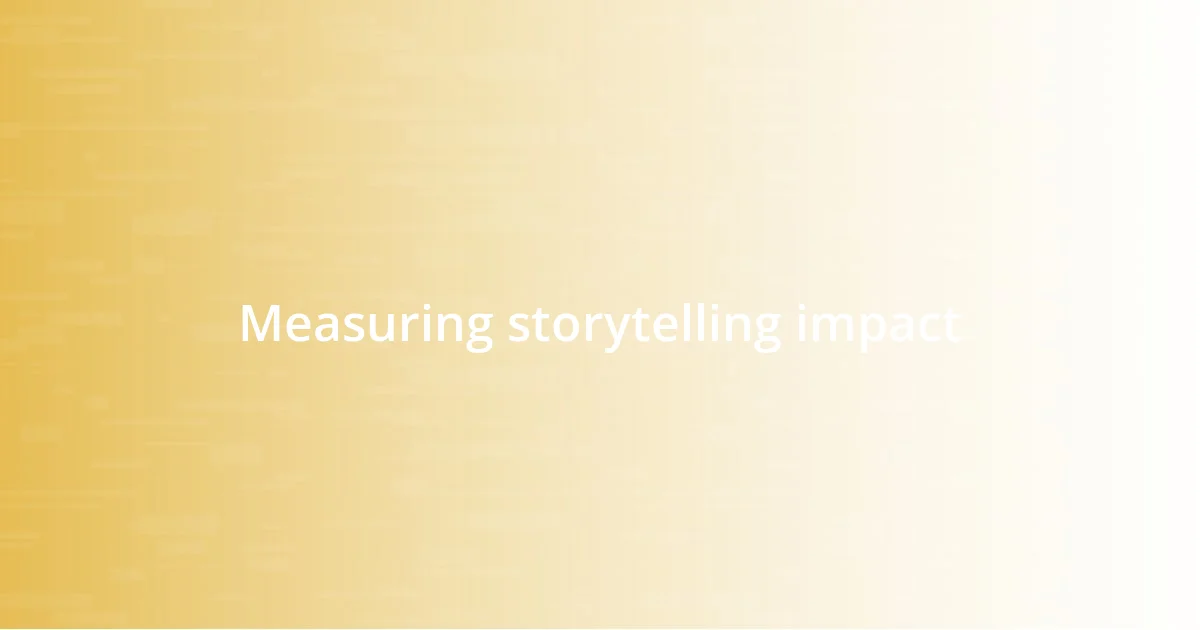
Measuring storytelling impact
Measuring the impact of storytelling can be quite nuanced, but I often find that analyzing audience engagement is a clear indicator. For instance, during a recent presentation, I noticed that the audience remained attentive, nodding along, which suggested they were emotionally invested in the story I was telling. This kind of engagement can be assessed through direct feedback or even informal surveys afterward to capture how the story resonated with them.
Another method I’ve employed is tracking behavioral responses, such as social media shares or comments. I shared a personal experience on my blog about a community project I was part of, and the flood of comments and shares really illustrated the story’s impact. It’s remarkable to think about how a narrative can inspire others to action or deepen their connection to a particular cause.
Lastly, I’ve also turned to data analytics to measure storytelling impact quantitatively. When I launched a recent storytelling campaign for a nonprofit, the ability to see increases in donations correlated with narrative elements we highlighted made me realize just how powerful storytelling can be in driving tangible results. Isn’t it fascinating how stories can translate into real-world outcomes, making the intangible measurable?
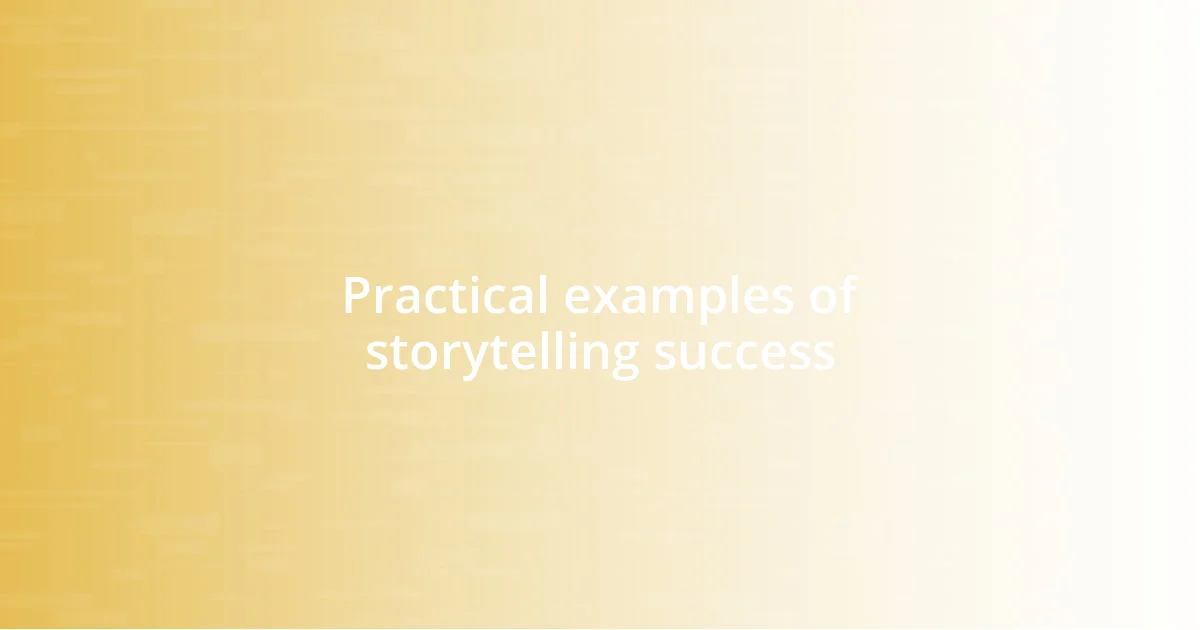
Practical examples of storytelling success
One striking example of storytelling success I witnessed was through a documentary series by a well-known streaming platform. They followed the lives of underprivileged youth aspiring to be musicians. The heartfelt narratives showcased their dreams, struggles, and triumphs, drawing in millions of viewers. I was captivated by the authenticity of their journeys; it felt less like entertainment and more like a shared experience. Doesn’t it remind you how powerful stories can bridge gaps between diverse audiences?
In the realm of food marketing, I remember a local farm that launched a campaign detailing the journey of their produce from seed to table. They shared the stories of the farmers, their families, and the land, creating a deep connection with consumers. Interestingly, I found that their sales surged as people felt compelled to support a tangible story rather than just buy vegetables. Have you ever considered how knowing the backstory of your food influences your purchasing decisions?
Another compelling narrative I encountered was from a tech startup that found success by relating their brand to the personal stories of everyday users. They created a series of short videos featuring real customers discussing how the product changed their lives. I couldn’t help but reflect on my own experiences; it felt like I was part of a community. The result? A surge in sales and an enthusiastic customer base built on shared stories and relatable experiences. Isn’t it intriguing how storytelling can create a powerful sense of belonging?














